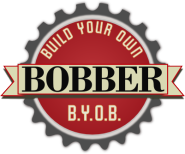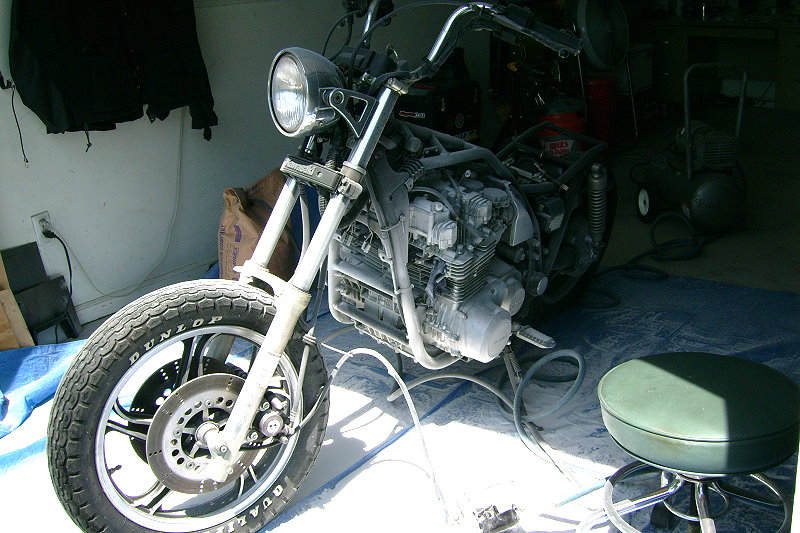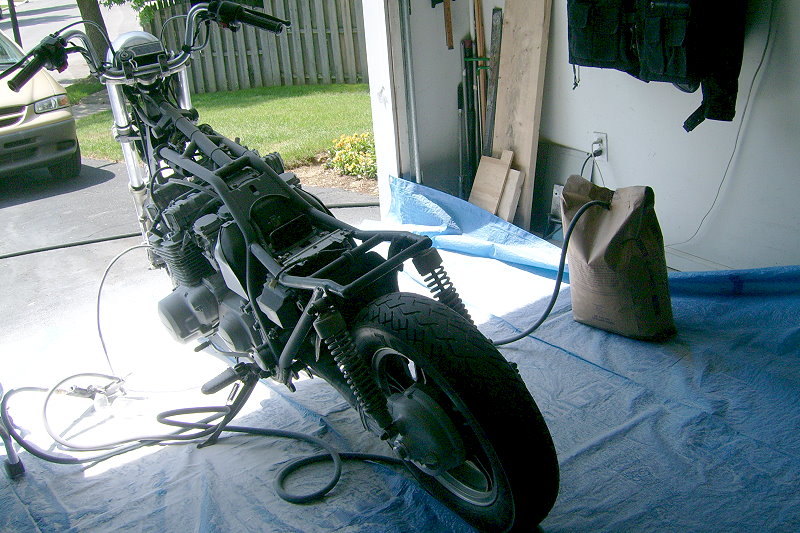The motor on the ZN was crummy, although not as crummy as the wheels.
I never ever saw wheels as dirty and heavily oxidized as the ZN’s. I started the cleaning at the rear because rear wheels are usually worse than the front wheels. After a couple hours with a wire brush, water and cleaner, the rear wheel came out looking pretty good. The front wheel didn’t look half bad until I got into it. A few minutes later, I learned how terribly oxidized it was. A few more hours later and the front wheel looked…not great, but okay.
The front of the motor looked like it hadn’t been introduced to a decent cleaning in a very, very long time. Given that the bike is over thirty years old and the wheels were nearly decrepit with crud, my guess may be spot on.
That kind of neglect bothers me, no matter how old the bike may be. The longer the condition prevails, the more difficult it is to fix. Yeah, I know…duh. Really it doesn’t take a lot to clean the motor. I’m not even talking about shining or polishing anything, just cleaning. Alright, time to get off my soap box.
So…the motor wouldn’t clean up with cleaners, degreasers, carb cleaners and whatever else I could lay my hands on. My attempts ended in frustration. It was obvious that the motor required special attention; a.k.a., soda blasting.
While I’ve blasted plenty of media in a blast cabinet, I never blasted with baking soda and I never blasted baking soda inside a garage.
How bad can it be, right? It’s basically the same set up—air compressor, media and blastee, as it were.
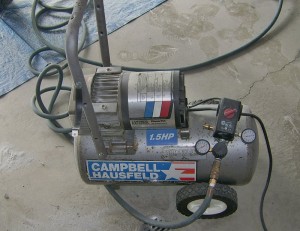
The small portable air compressor that I picked up off Craigslist performed well and well beyond some expectations. The machine produced 90 psi with no problem. Further, there was no stop watch or timer but I pretty much ran the compressor non-stop for an hour at a time. While the motor never stopped running, it kept up with me without missing a beat. Towards the end, it was spitting water with the baking soda but that would easily be remedied with a filter or separator.
The sandblasting kit did a good job too. It’s a basic siphon system that’s easily worth the twenty bucks. There was only one hitch with the rubber feeder hose. While blasting the ZN, the media seemed as if it were clogged. I first cleared the end of the rubber hose that was stuck down into the media. After that, I wanted to clear the gun of any clogs but couldn’t get the rubber hose off the gun. It was really stuck on.
The hose was on so tight that it wouldn’t even turn, much less pull off. A pair of hose pliers did the job, but they also ripped through the soft rubber. The rubber hose, while very flexible, is something less than rugged.
As far as blasting media goes, I chose baking soda, specifically Armex baking soda manufactured by Arm & Hammer. Armex baking soda is made for use as an abrasive in cleaning or removing coatings without altering the base material.
Armex produces 11 different formulations for blasting everything from precision components, engine rebuild applications, delicate substrates and composite materials to architecture and masonry, processing and manufacturing equipment. One important thing that I learned is that all baking soda is not created equal. While all baking soda is chemically the same (NaHCO3), Armex is formulated for use as a blast media. Grocery store baking soda won’t get the job done. Further, it’s possible to find bags of baking soda much cheaper than Armex. For instance, I paid $39 for a 50-pound bag of Armex, medium/fine profile. At a local grain and feed store, I found a 50-pound bag of NaHCO3 (baking soda) for $14. While I didn’t experiment with the cheaper brand, my instinct tells me that was a good decision for cleaning this very grimy engine.
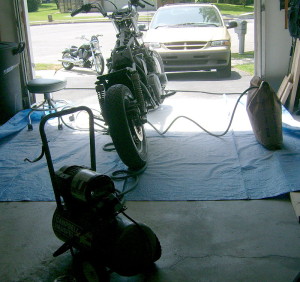 Another thing that I learned is that I’ll avoid blasting in the garage. Baking soda, according to the manufacturer, fractures into much smaller particles upon impact. This results in a better cleaning action but also transforms the particle to a fine dust which goes everywhere. After blasting, I spent a couple hours doing clean-up in the garage. Next time, soda blasting will be done outdoors. Precautions will be taken to protect plants, flowers, shrubs, grass and trees with clean-up being so much easier.
Another thing that I learned is that I’ll avoid blasting in the garage. Baking soda, according to the manufacturer, fractures into much smaller particles upon impact. This results in a better cleaning action but also transforms the particle to a fine dust which goes everywhere. After blasting, I spent a couple hours doing clean-up in the garage. Next time, soda blasting will be done outdoors. Precautions will be taken to protect plants, flowers, shrubs, grass and trees with clean-up being so much easier.
Because the media fractures apart at blast pressures, Armex is considered non-recyclable, or a one-pass media. To the contrary, I was able to catch lots of the baking soda on tarps that were spread out on the floor. Because of the reclamation, I used much less than originally expected to clean the bike.
Since I’m talking about dust, it’s worth mentioning that Armex has a 0 HMIS (Hazardous Materials Identification System) rating. It adds no hazards to a project. It’s still essential, I believe, to use personal protective equipment. If that necessity isn’t abundantly clear in the first few minutes of blasting, then it’s probably not being done right. Plus, the operator needs to take into account the coating being removed.
So…as far as equipment goes, everything operated as it should. The only hiccup is that the blaster could use a water separator, especially when running for an extended period of time.
Okay, but how effective is soda blasting? First, my experience is very limited. It’s limited to this one project with this one type of media on this one surface. The bike looks much better. It did a good job. Actually, it did a very good job. This project was purposely designed not to be very aggressive. That’s how it was put together. Yet, it effectively removed years of neglect with minimal effort. I wouldn’t think twice about using soda blasting for all kinds of applications. Plus, anything that won’t fit into my blast cabinet can easily be done outside.
The downside is, if I forget to wear a mask, then I taste Alka-Seltzer all day long. Yuck.
Next: A new horse in the stable
